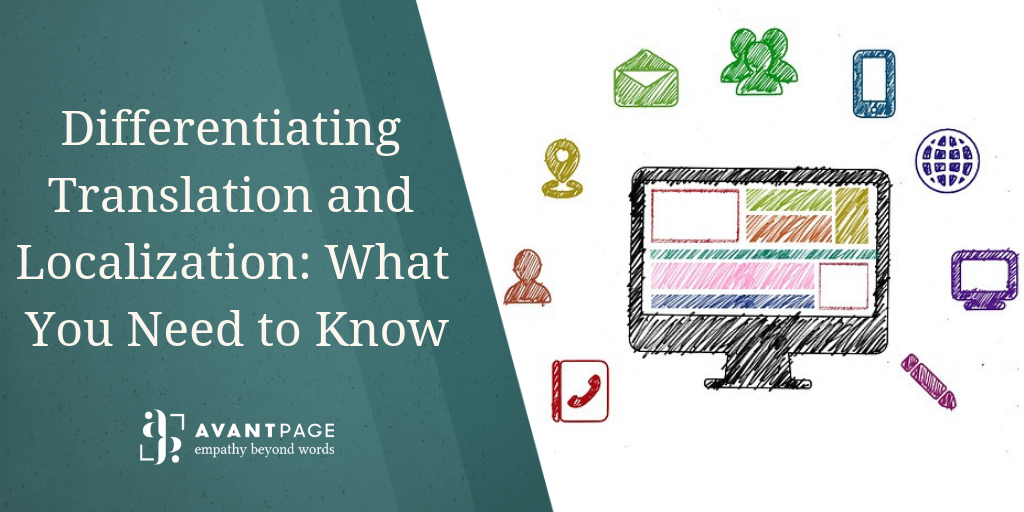Translation and localization are often paired together when you’re searching the internet for information on how to start your next translation project. While the two processes have similarities, translation and localization are two different linguistic concepts. Understanding that difference can not only benefit your next translation project, but also help you to globalize your business more effectively.
Translation and localization: definitions
To accurately determine the differences between translation and localization, we need to start by defining what each process is, and what is involved in each process.
Translation is defined as the communication of meaning from one language (the source) to another language (the target). Translation refers specifically to written information.
Localization is defined as the process of adapting a product or content to a specific locale or market. Translation is one of the elements of the localization process, but the process consists of several other elements as well.
Translation and localization: similarities
The major similarity between translation and localization is that they both involve the translation of a document from a source language to a target language.
The two processes also involve the Translation, Editing, Proofreading (TEP) process to ensure the translation is accurate and of high-quality. This three-step process involves the original translation of your document, the editing of that translation to catch any errors, and the proofreading of the edited document to ensure that the original content is reflected in the translation and that the translation is error-free.
Translation and localization: differences
While localization involves the process of translation, localization also involves many other processes. The ultimate goal of localization is to adapt your content so that when it is viewed by your target audience (the audience that will view it after localization), it feels as though the content was originally created in the target language and for the target culture.
Beyond translation, localization also involves:
- Adapting graphics to ensure they’re well-received in the target culture
- Modifying content, including idioms, jokes, and common references, to better suit the target culture
- Adapting the design and the layout of the document to properly display the translated text
- Converting any measurement units to local units, including currencies
- Adapting the format of dates, addresses, and phone numbers to local formats
- Addressing any local regulations or legal requirements.
Localizing your content can help you to reach new business markets and ensure that your content will be well-received in the target culture. If you’d like to learn more about localization, or you’d like to start a localization project, call us at (530) 750-2040 or request a free quote today.
GET VALUABLE CONTENT DELIVERED STRAIGHT TO YOUR INBOX. SIGN UP FOR OUR NEWSLETTER TODAY!

Ash is the Marketing Coordinator at Avantpage, Inc. Ash works to create high-value, targeted content that allows consumers to connect with us at Avantpage. They are a strong proponent of everyone having equal access to communication and information. They have written and created content for a variety of online platforms, and have been published in over 30 online platforms with varying topics. But Ash is other things too! An avid athlete, Ash enjoys spending their free time rock climbing, partaking in aerial circus sports, and practicing acroyoga.
